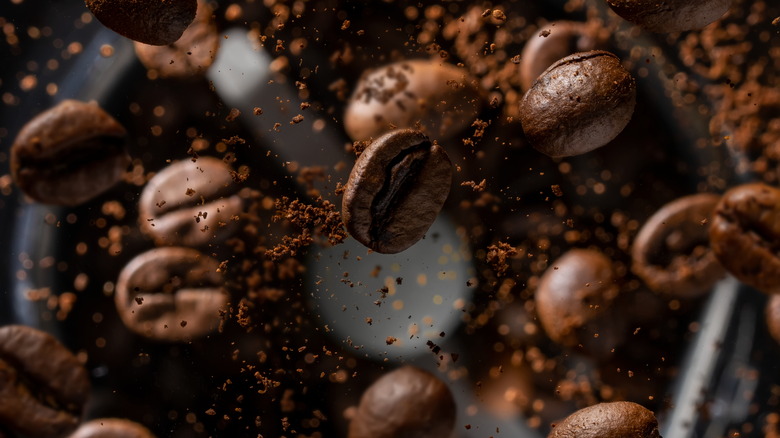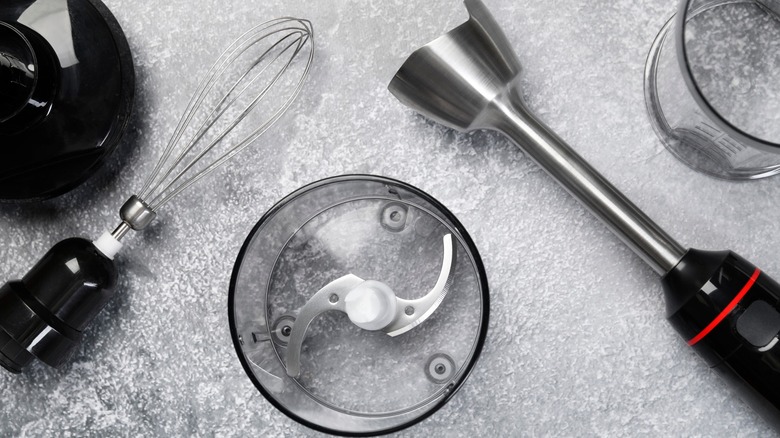The Kitchen Tool You Need To Stop Grinding Coffee Beans With Immediately
You can't enjoy a cup of coffee without first grinding the beans. And according to Statista, over three-quarters of coffee drinkers in the U.S. buy their coffee beans pre-ground just to avoid this hassle. That leaves the rest to their own coffee-grinding devices, which is not a bad thing since whole beans remain fresh longer. With their protective exteriors intact, whole beans have a longer shelf life than ground coffee and you won't need to toss them out as quickly, which saves you money in the long run. This is all great news if you're a home brewer who owns a decent coffee grinder. But if you don't, you might have been adding those beans to your immersion blender's blade guard, covering it with plastic, and attempting to blitz away — but here's why you should stop doing that.
An immersion blender is simply not an appropriate tool for the job. As a test performed by Serious Eats found, coffee beans flew all over the place after using this small appliance as a replacement for a grinder. Even after using lots of plastic wrap to secure the coffee beans in the cap that houses the grinding chamber, the blender was activated only for the beans to cut through the plastic and make their way into every corner of the kitchen. The method also requires you to hold the blender upside down with the blades facing toward you — a recipe for ultimate disaster. It just isn't worth grinding coffee beans with this kitchen tool. Besides, the cavity doesn't hold enough beans to even make a decent cup of coffee. It's much better to invest in a quality coffee grinder.
Using blenders to grind coffee beans is wasteful and ineffective
Besides the trouble of using it, an immersion blender requires plenty of plastic wrap to secure your coffee beans tightly. And you don't want to use something like a Ziploc bag, which, although sturdier, leaves too much room for the beans to escape the blades. Thus, piling on more plastic wrap is the solution — and a wasteful one at that. You may have to go through numerous tests to get the correct amount of plastic wrap you need, all while losing valuable beans in the process. On top of that, you'll probably end up with bits of plastic wrap in your ground coffee, so even if you're not going to dump that batch in the garbage, you're still going to use up valuable rush hour minutes picking plastic bits from your ground coffee!
Blenders, in general, simply aren't made for grinding coffee beans, and will likely give you an inconsistent grind size. The next thing you know, you'll be trying to regrind already-ground coffee beans, which is a huge no-no since it'll only make your coffee taste worse. And when you also consider the fact that grinding coffee beans in a blender contributes to the wear and tear of its blades, you might just rethink this entire practice. Ultimately, you're better off sticking to other simple methods if you don't have a decent coffee-grinding machine, such as using a mortar and pestle to achieve your specific grind texture, or trying this low-tech way that gives you larger coffee grounds suitable for a French press or cold brew.

